|
|
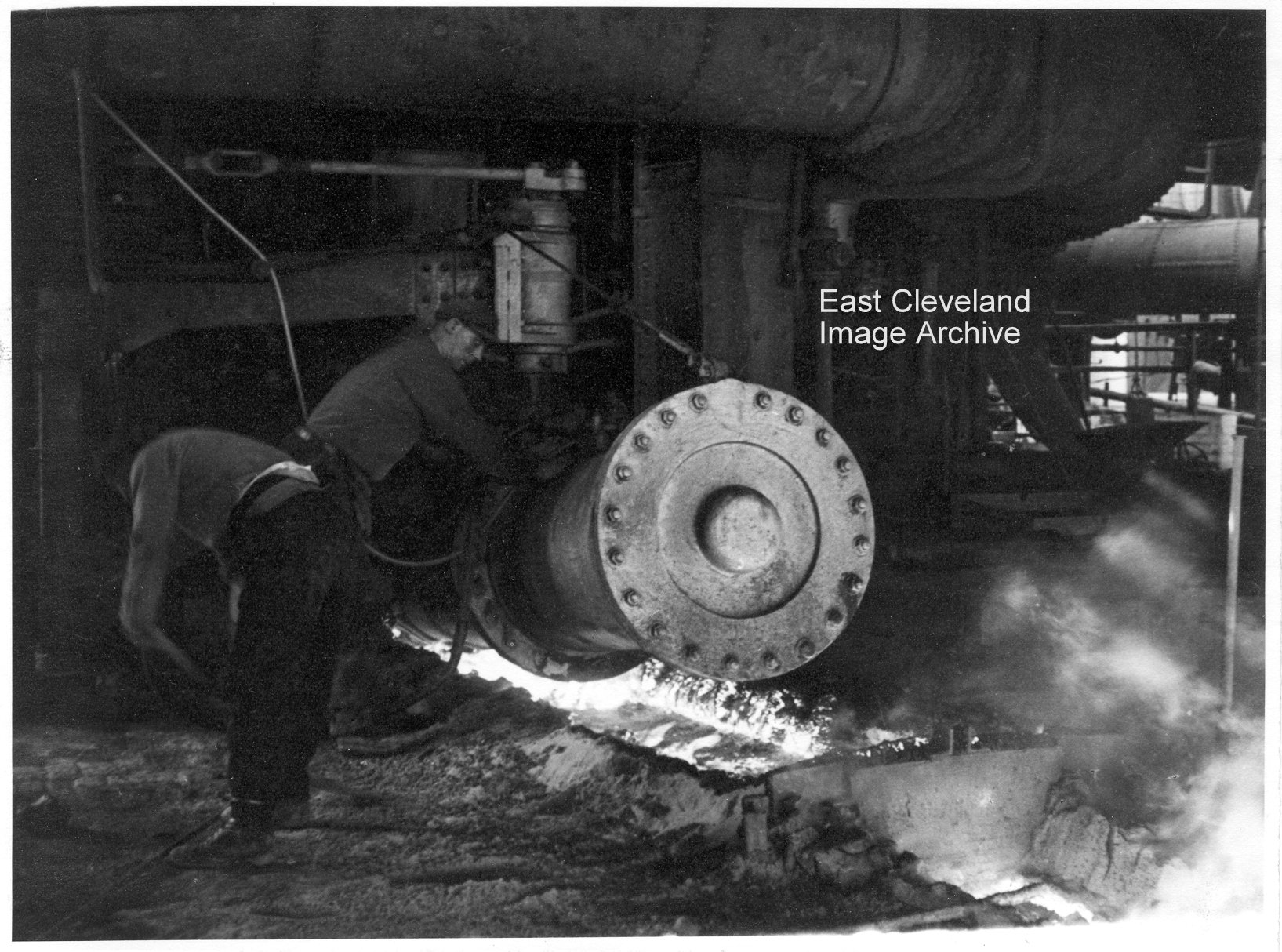
A very atmospheric shot of No. 5 blast furnace casting on Skinningrove; you can almost taste the sulphur! The ”gate” in the sand runner is to skim the slag off the iron and divert it towards the waiting slag ladles, the iron carries on straight ahead. The most dangerous time in the tapping process is when the liquid iron and slag are almost exhausted – because the system is under pressure the pressure seal can blow through the tap-hole sending slag and iron spraying in all directions, very pretty, but very dangerous!
The device which can be seen facing the camera is actually the “Clay gun”, a device for injecting clay into the taphole at the end of a cast, to stop the flow of iron. It looks like the Frontside lads are tidying up at the end of a cast. The large circular pipe above is the “Bustle main” which fed hot blast from the stoves into the furnace via the tuyeres which were spaced radially round the furnace. Latterly the Clay gun was powered by electricity, and it was the shift electricians duty to be there in case the gun failed to work, as things could get quite hairy if the gun failed to stop the taphole. The procedure was to start to bring the furnace “off blast” if the gun failed. In the meantime as a safety precaution the furnace would “Pull wind”.
Image courtesy of the Pem Holliday Collection.
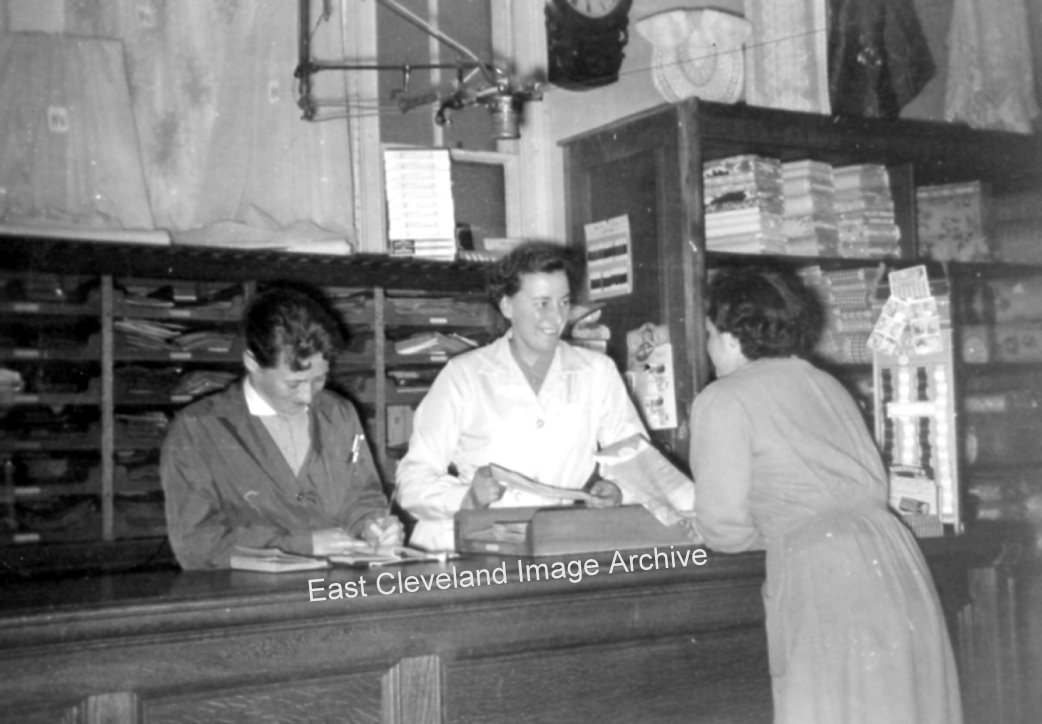
Betty Ditchburn and Mary Coverdale are behind the counter; whilst Betty Gorman is in front in this photograph. The cash tin can be seen above the shelves. Do you remember how your payment was put in the canister and it went round the wires to the kiosk? The money was taken out and your change put in the tin and then it was sent back to the counter.
Image and names courtesy of Mrs. Betty Gorman.
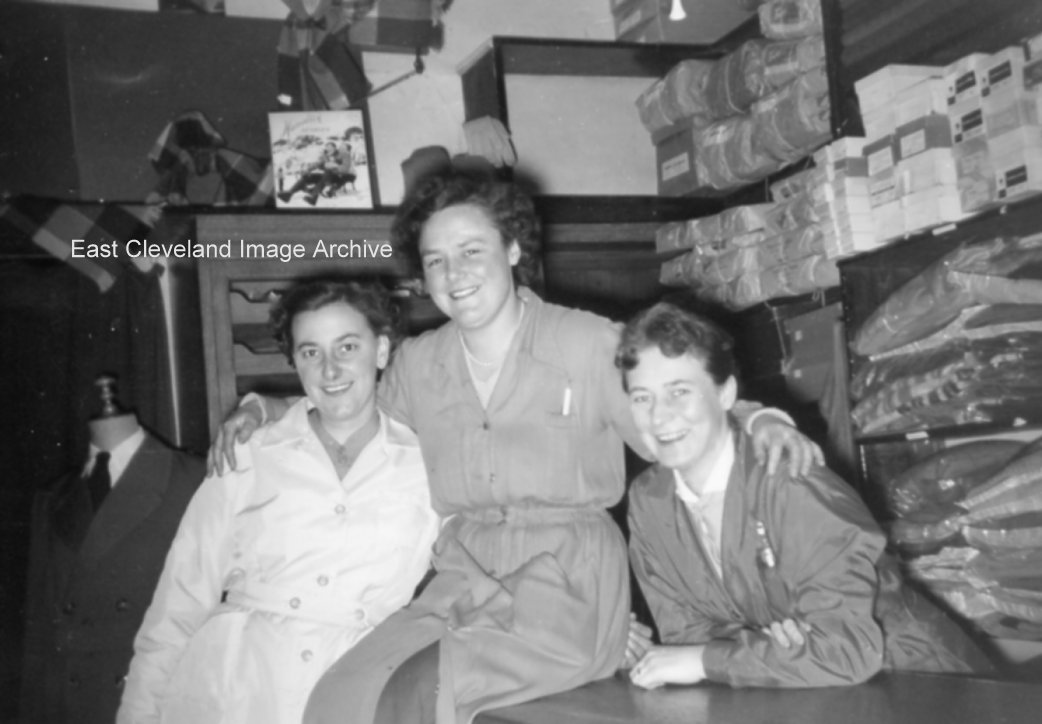
A cheerful picture of Mary Coverdale, Betty Gorman and Betty Ditchburn at the counter of Dodd’s shop. The shelves behind them are packed with stock.
Image courtesy and names courtesy of Mrs. Betty Gorman.
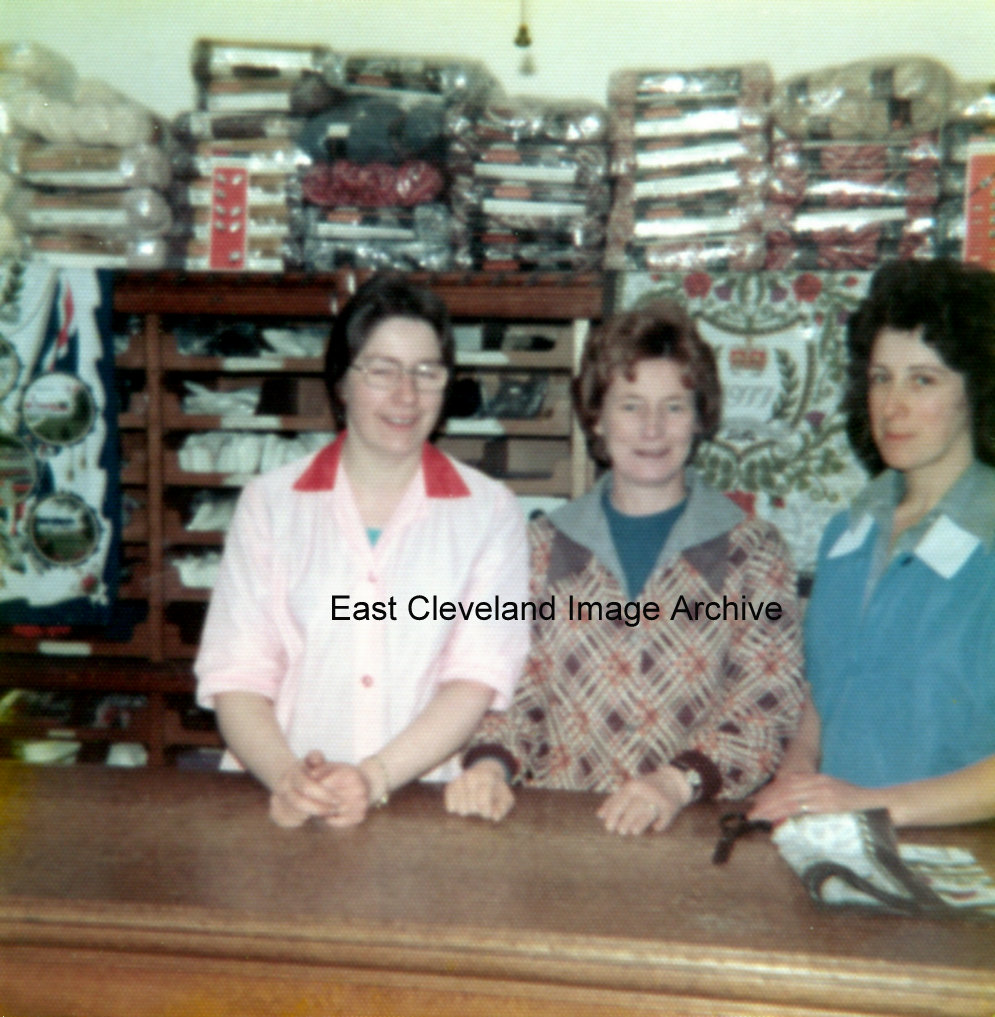
Dorothy, Betty and Jean pictured behind the counter in Dodd’s shop. There’s a 1977 Silver Jubilee, souvenir tea towel behind them. Was this the year that this photograph was taken?
Image and names courtesy of Mrs. Ditchburn.
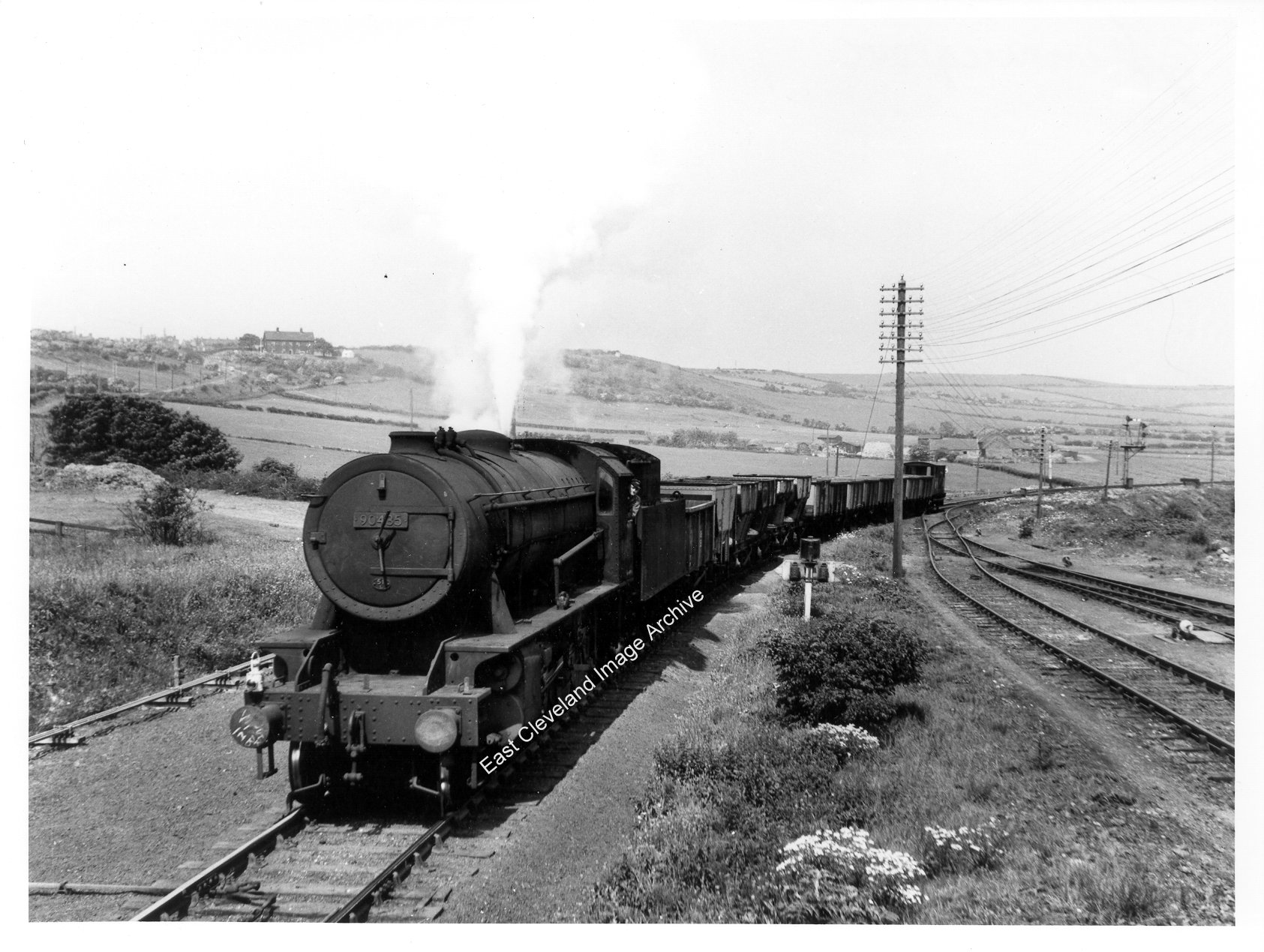
A train of empty iron-ore wagons rolls towards Skinningrove station, Brotton Cottage Hospital (Brotton Miner’s Hospital) in the background, headed by a rather grimy ’Austerity’ class WD/8 9 2-8-0 locomotive whose number is 90435. Taken in 1959 this image shows the train is not bound for Skinningrove Iron works, the reception sidings are the lines branching away on the right.
Image believed to originate from the Neville Stead Collection, but came to the Archive from the Pem Holliday Collection.
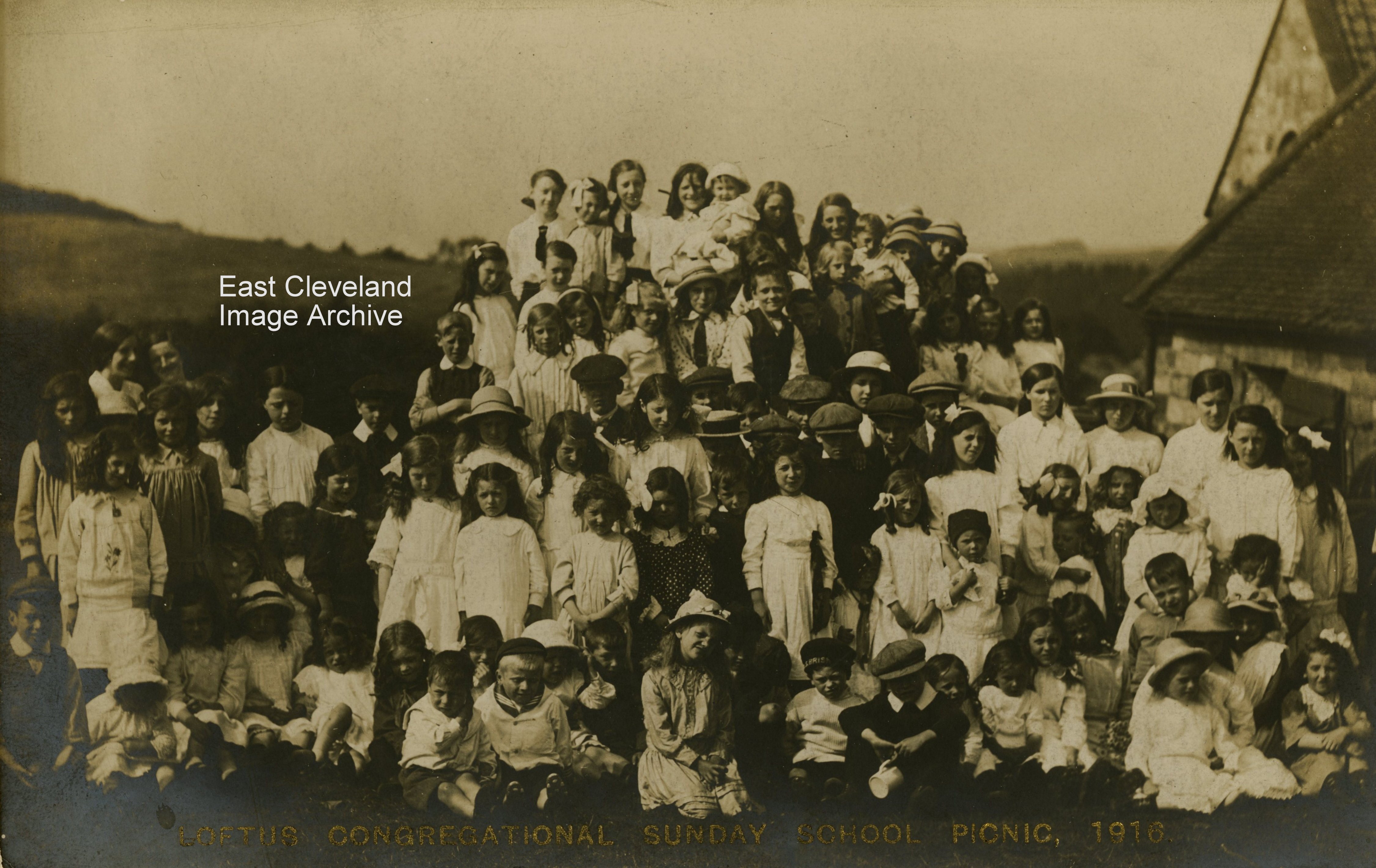
An awful lot of children here, from the very small to the almost adult. The non-conformist churches, in general, were more philanthropic than the orthodox church and organised events which encompassed their whole congregation. In this case all of the children would have been driven up here (possibly on the back of farmers’ wagons, although by this time possibly even in a charabanc or motor bus) and treated to a picnic in one of the local farmer’s fields. Games and competitions, usually with prizes, would ensue and in the late afternoon all would return home again happy and sleepy (all except those who never won a prize, perhaps?). My mother used to tell me of similar events that she had participated in (funnily enough she was christened into the Congregational Church), she always spoke of them with fond affection.
Image courtesy of Olive Bennett.
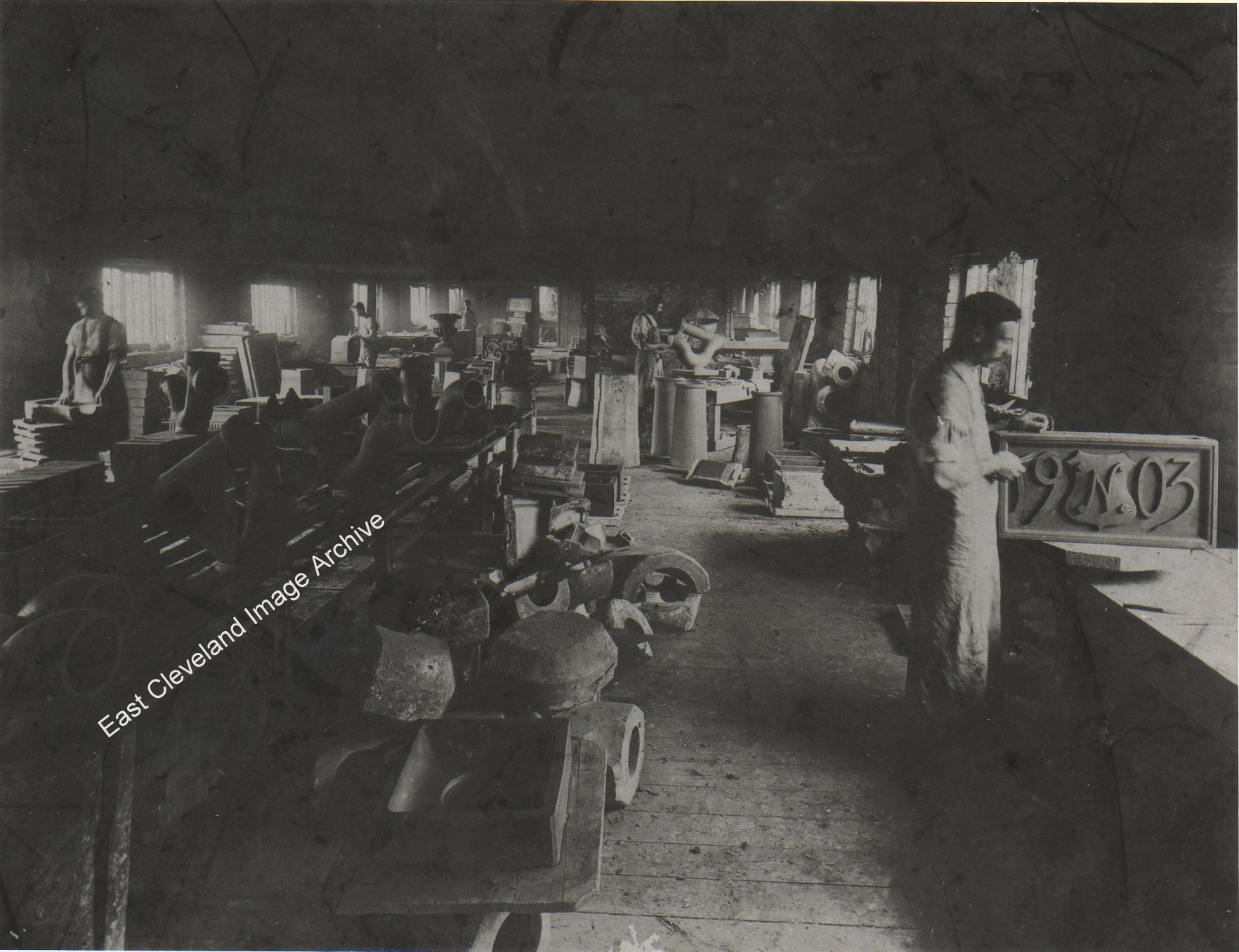
This looks like a photograph of a finishing shop – a place where clay or ceramic objects are cleaned up and checked for defects. I could suggest a date of 1903 – judging by the plaque being held to view at the nearest workbench, but that could be a red herring! We have said clay or ceramic because most of the objects in the image look like ceramic pipework, chimney pots and urns. The reason it looks rather gloomy is that it was shot in natural light – no flash. Behind the little table in the foreground can be seen some small moulds; like boxes in two halves. We have been told by Gavin Purdon: “The 1903 plaque with a letter N on its shield shown in this photograph can be seen today in Commondale village mounted on the gable end of Ness Terrace nearest to Commondale railway station. This would suggest the photograph has a strong connection with Commondale Brick Pipe & Tile Works.”
Many thanks to Gavin Purdon for that update.
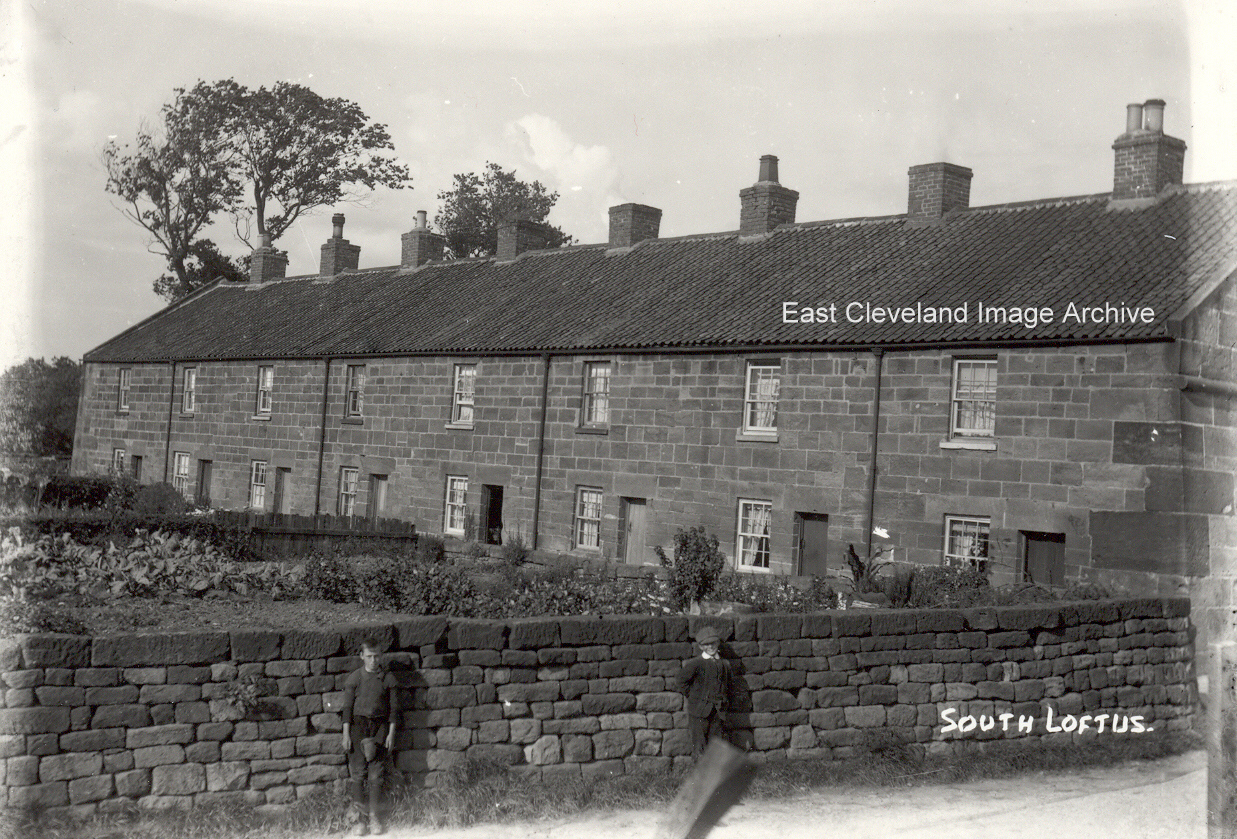
A fine view of the row of cottages at South Loftus – complete with the obligatory posed urchins! Emily Millthorpe (nee Bunney) tells us: “I was born in one of these houses in 1948, my parents names were Kenneth and Florence. I have one brother (Keith)and one brother (Clive) who were born there. We then moved to Barnsley where my father worked in Grimethorpe pit. He worked in Skinningrove pit when we lived there, he worked with someone called Mr Gell who was in a fire and was scarred very badly all over and one younger brother also born there.”
Image courtesy of the Pem Holliday Collection and thanks to Emily Millthorpe (nee Bunney) for that information.
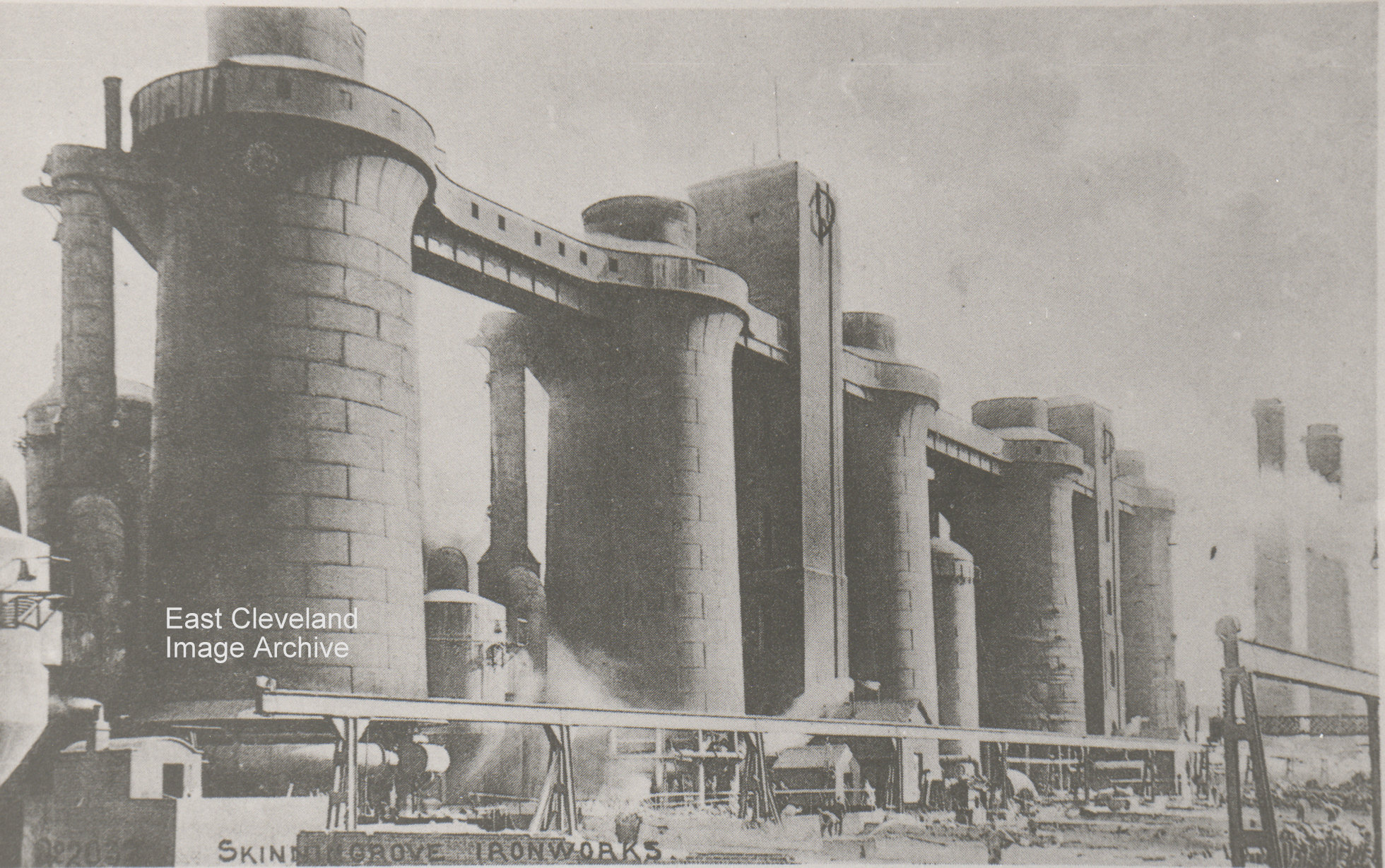
A picture postcard showing the blast furnaces and pig beds at Skinningrove Iron Works. These are the 5 original, stone-built, blast furnaces at Skinningrove Iron Works (no Steel in the title then – we are not even sure it was called Skinningrove Iron Works – at this time). The furnaces were hand-loaded with large two-wheeled barrows which ran on knife-edge iron wheels (to minimise the rolling resistance), hence the gallery connecting the furnaces to the lift housings. The iron was tapped directly into a sand gully, called a sow, which had many branches, called pigs (hence the term pig-iron), each the same size and pressed into the sand with a specially-shaped former. When sufficiently cool the pigs were loaded onto trucks and taken to the jetty, via an incline, rope-hauled, railway, and then in company steamships to steelworks and iron foundries in Durham and Middlesbrough. Eventually they were even transported to Europe. All of these stone-built furnaces were eventually demolished and new furnaces built; of which no. 3 and no. 5 survived.
Image courtesy of the Pem Holliday Collection.
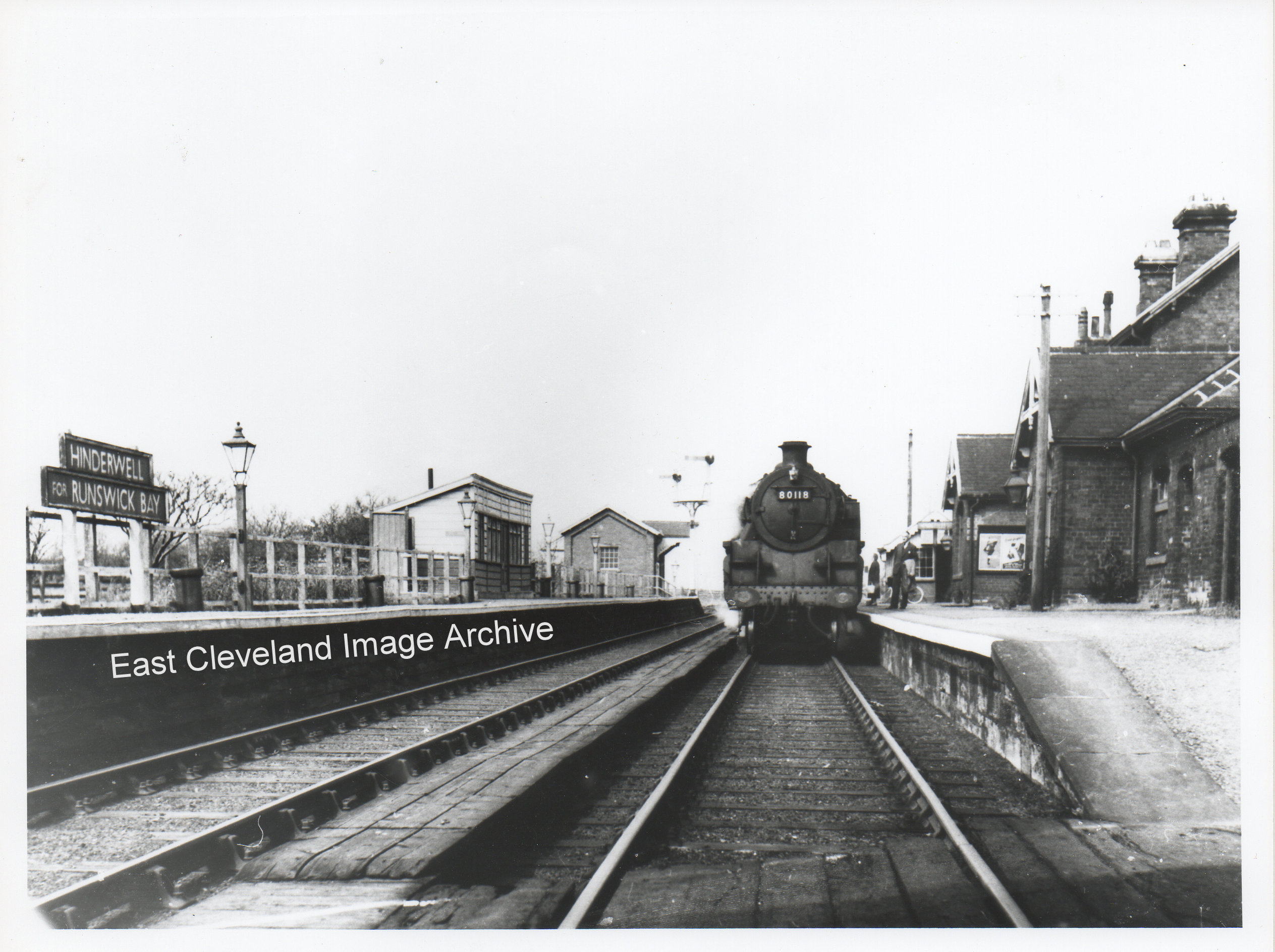
A line-level shot of a local train in Hinderwell Station. The loco is a 2-6-4 BR Standard Tank, number 80118, so this image could well be towards the end of the line’s life, certainly in the ’50s, when this class took over from A-series 4-6-2T. For the railway modellers among you this particular locomotive is available from the Bachmann stable for ’OO’ gauge, in early BR livery – probably exactly this era (sorry for the ‘anorak’ information).
Image courtesy of the Pem Holliday Collection.
Page 6 of 13« First«...45678...»Last »
|
|










Recent Comments